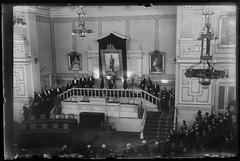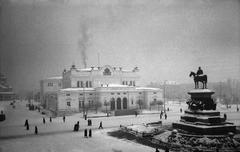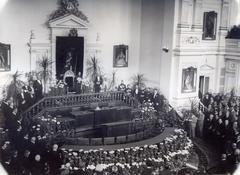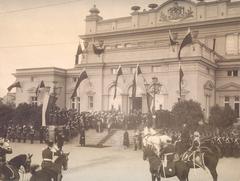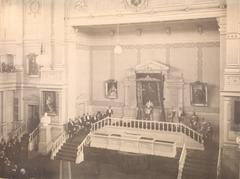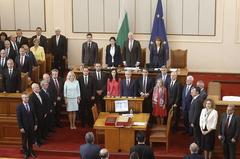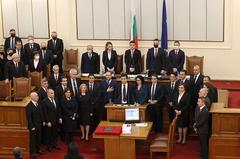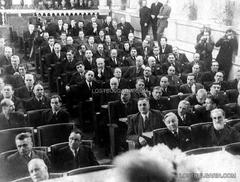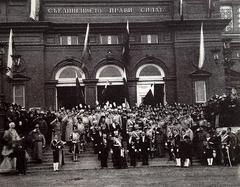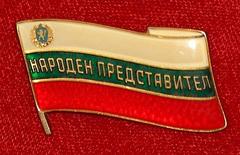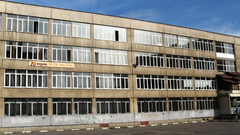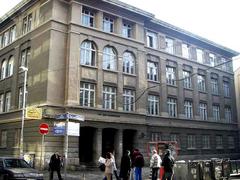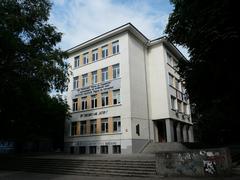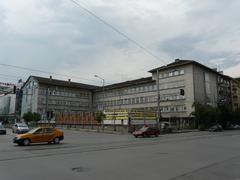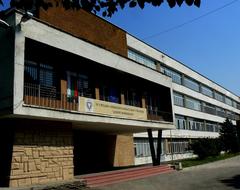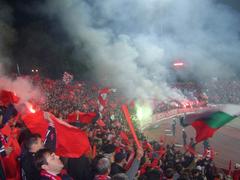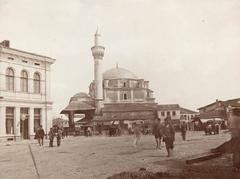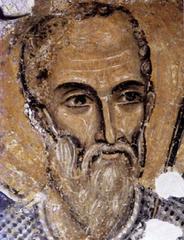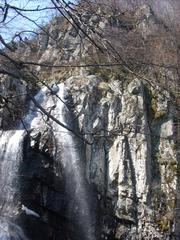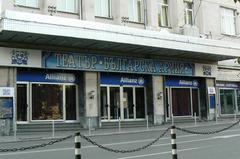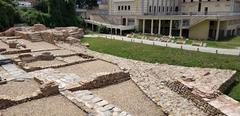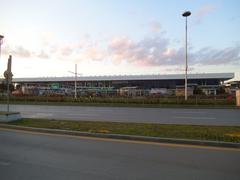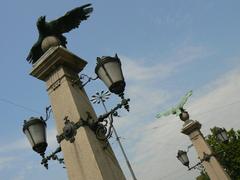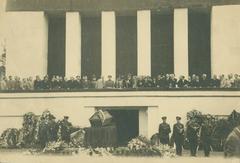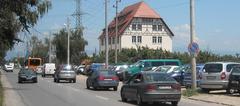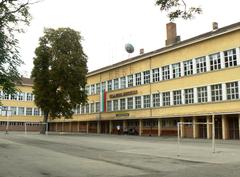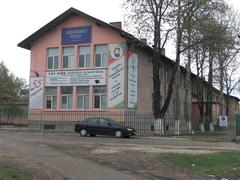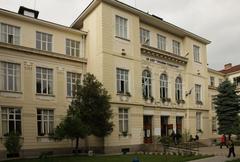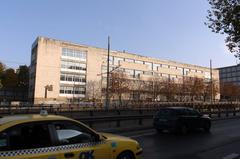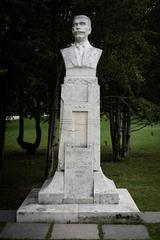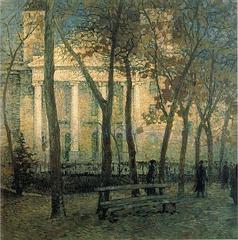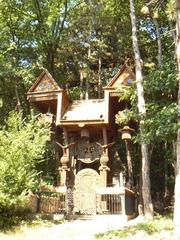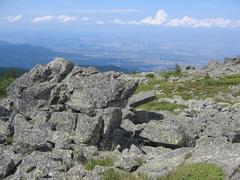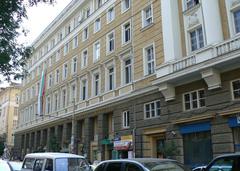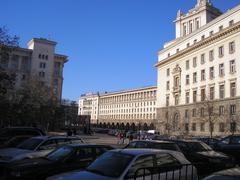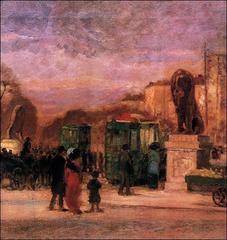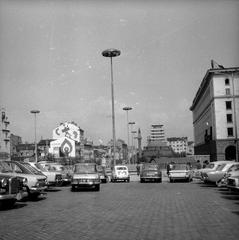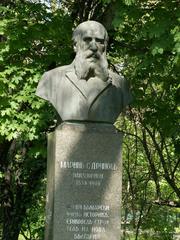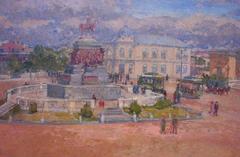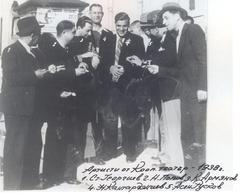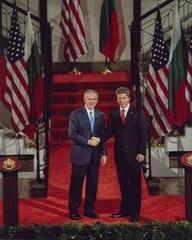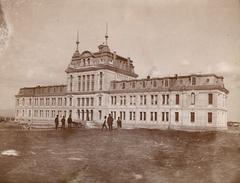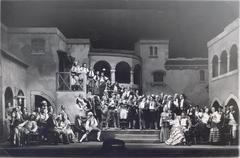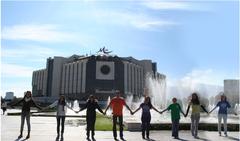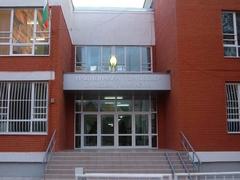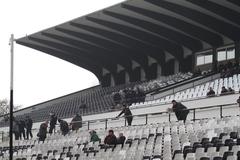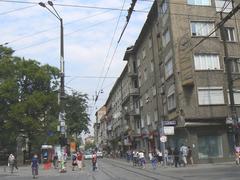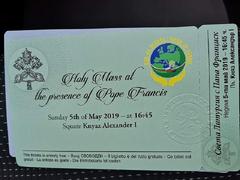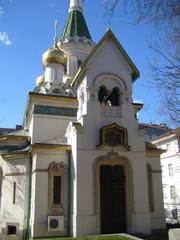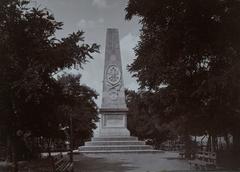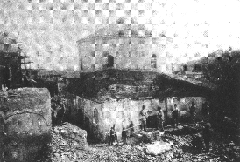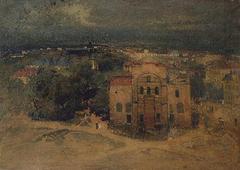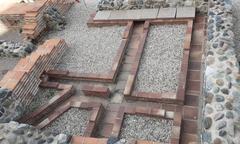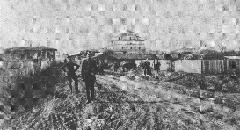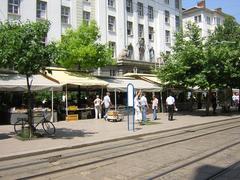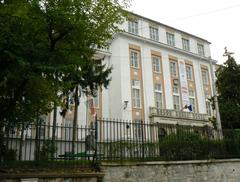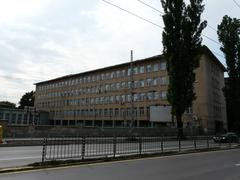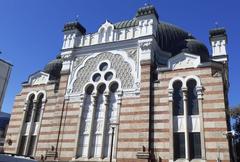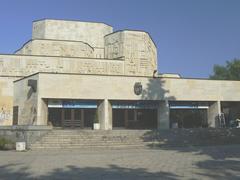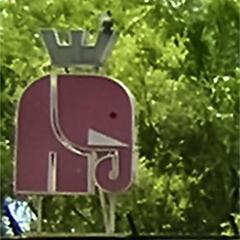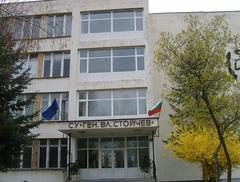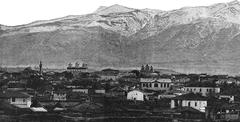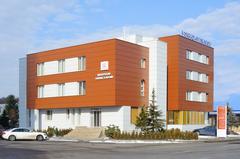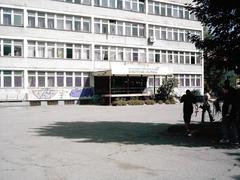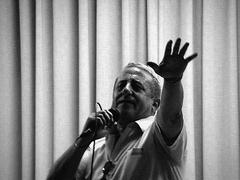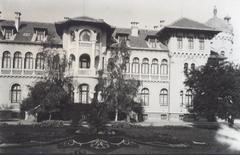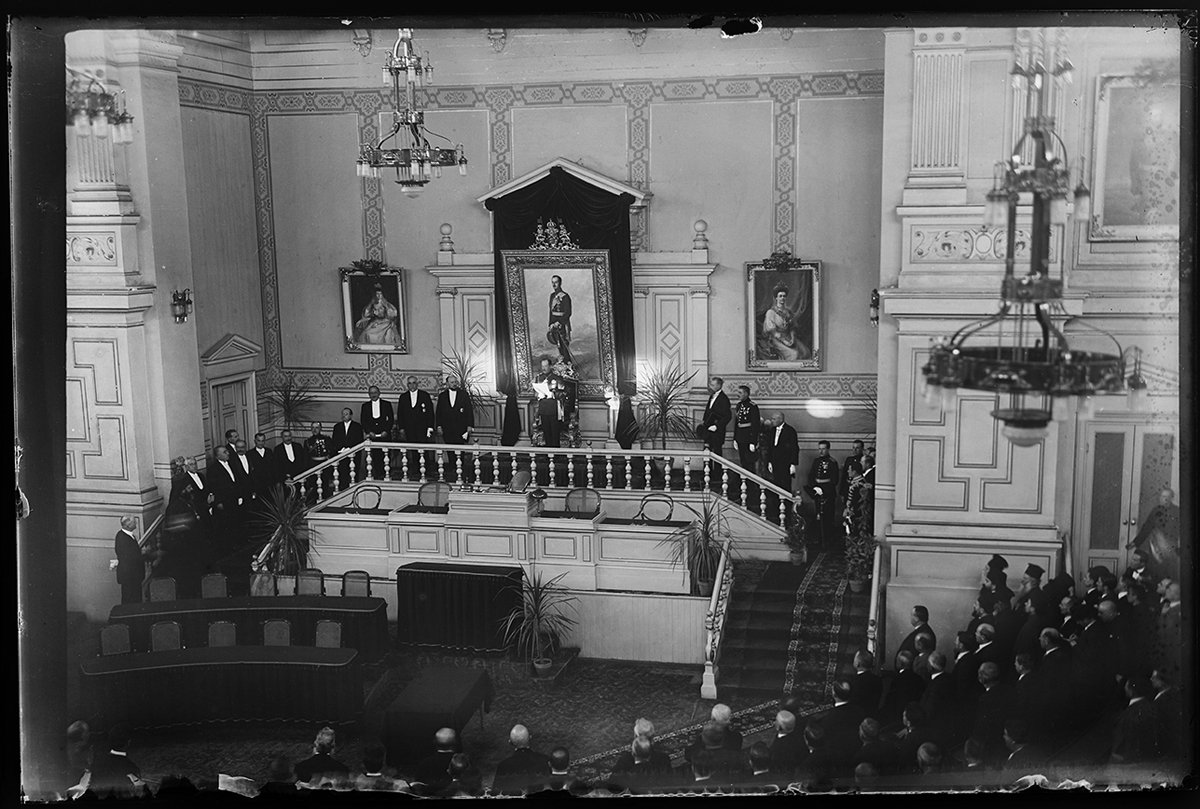
National Assembly of Bulgaria Sofia Visiting Hours, Tickets, and Historical Significance Guide
Date: 14/06/2025
Introduction
Situated at the heart of Sofia, the National Assembly of Bulgaria is a defining symbol of the nation’s political heritage and a prime example of European-inspired architecture. Established soon after Bulgaria’s liberation in 1878, the Assembly’s Neo-Renaissance and Neoclassical buildings not only house Bulgaria’s legislative power but also stand as a cultural and historical beacon for visitors. With its motto “Unity makes strength” inscribed above the entrance, and a central location surrounded by iconic Sofia historical sites, the National Assembly is an essential stop for anyone exploring Bulgaria’s capital (Wikipedia; GuideBG).
This comprehensive guide provides up-to-date details on visiting hours, ticketing, guided tours, and accessibility, along with a rich historical context and recommendations for exploring nearby attractions. Whether you’re a history enthusiast, architecture lover, or first-time visitor, this article ensures a rewarding and well-informed experience at one of Sofia’s most important landmarks (sofia.bg).
Table of Contents
- Introduction
- Historical Background
- Architectural Evolution
- Symbolism and National Identity
- Visiting the National Assembly: Hours, Tickets, and Tours
- Accessibility and Travel Tips
- Nearby Attractions and Sofia Historical Sites
- Visitor Etiquette and Safety
- Frequently Asked Questions (FAQ)
- Visual and Interactive Resources
- Conclusion and Visitor Recommendations
- References and Further Reading
Historical Background
Foundation and Early Days
The roots of Bulgaria’s parliament trace to 1879, just after liberation from Ottoman rule. The Tarnovo Constitution established a unicameral legislative body, marking Bulgaria’s commitment to parliamentary governance (Wikipedia; BNR).
Construction and Expansion
Commissioned in 1884, the National Assembly’s original building was designed by architect Konstantin Jovanović, who infused Neo-Renaissance style to reflect European trends. The structure was consecrated the same year, with expansions by J. Milanov (northern wing, 1896–1899) and P. Koichev (1925–1927), which added offices, archives, and a parliamentary library (GuideBG; Sofia Municipality).
Through Political Change
The Assembly has witnessed Bulgaria’s transformation from monarchy to communism and its return to democracy with the 1991 constitution (Government of Bulgaria).
Architectural Evolution
The National Assembly complex includes:
- Historic Neo-Renaissance Building: Noted for its symmetrical façade and the inscription “Unity makes strength.”
- Party House: A monumental neoclassical structure completed in 1954, featuring grand Corinthian columns and Soviet-era symbolism (sofia-skymuseum.eu).
Inside, visitors can find rich artistic details, including imported materials, ornate plasterwork, and symbolic sculptures (sofia.bg).
Symbolism and National Identity
The Assembly is more than a government building; it is a national symbol. Its location on Narodno Sabranie Square places it at the center of civic life, with the nearby statue of Tsar Alexander II (“the Liberator”) underscoring Bulgaria’s path to sovereignty (questoapp.com).
Declared a cultural monument in 1955, the building represents the ideals of freedom, unity, and democratic governance (GuideBG).
Visiting the National Assembly: Hours, Tickets, and Tours
Visiting Hours
- Guided Tour Availability: Monday to Friday, generally from 10:00 AM to 4:00 PM. Hours may be adjusted for parliamentary sessions or national holidays (visitsofia.bg).
- Exterior Access: The façade and square are accessible at all times.
Tickets and Entry
- Cost: Entrance for guided tours is typically free, but booking in advance is mandatory due to security protocols.
- Booking: Reserve through the Sofia Tourist Information Center or the official Assembly website.
- Security: Expect ID checks and security screening before entry.
Guided Tours
- Languages: Tours are available in Bulgarian and English; other languages may be arranged.
- Content: Tours cover the Assembly chamber, historic halls, and Bulgaria’s parliamentary traditions.
- Groups: Tours are prioritized for organized groups, students, or during special open days. Individual spots may be available with advance notice (turismosofia.com).
Accessibility and Travel Tips
- Location: 2 National Assembly Square, Sofia 1162.
- Public Transport: Easily reached via tram, bus, and metro (Sofia University “St. Kliment Ohridski” station).
- Accessibility: The square is wheelchair-friendly, but interior access may be limited in the historic building. Confirm arrangements in advance (ipanematravels.com).
- Dress Code: Smart casual attire is recommended.
- Photography: Permitted outside; interior photography may be restricted during tours or sessions.
Nearby Attractions and Sofia Historical Sites
Within walking distance, visitors can explore:
- Alexander Nevsky Cathedral: Iconic Orthodox cathedral with golden domes.
- Monument to the Tsar Liberator: Honors Russian Emperor Alexander II.
- Sofia University: Bulgaria’s oldest university.
- National Art Gallery & Ethnographic Museum: Housed in the former royal palace.
- Borisova Gradina Park: Sofia’s largest park for post-sightseeing relaxation (destinationabroad.co.uk).
The area is also rich in cafés, galleries, and shops, offering a vibrant city experience (bg-guide.org).
Visitor Etiquette and Safety
- Behavior: Respectful conduct is expected, as the Assembly is an active government site.
- Language: Bulgarian is official, but English is widely spoken in tourist areas.
- Security: The area is well-guarded; remain alert during large gatherings or demonstrations.
Frequently Asked Questions (FAQ)
Q: What are the National Assembly of Bulgaria visiting hours?
A: Guided tours are typically available Monday–Friday, 10:00 AM–4:00 PM, but always check for changes due to parliamentary sessions.
Q: Is there an entrance fee?
A: Guided tours are free but require advance booking.
Q: How do I book a tour?
A: Through the official website or Sofia Tourist Information Center.
Q: Is the building wheelchair accessible?
A: The square is accessible, but interior access may be limited. Confirm in advance.
Q: Can I take photos inside?
A: Exterior photography is welcomed; interior photography depends on tour and session rules.
Q: What other sites are nearby?
A: Alexander Nevsky Cathedral, Monument to the Tsar Liberator, Sofia University, and Borisova Gradina Park.
Visual and Interactive Resources
- Explore a virtual tour of the National Assembly.
- Use interactive city maps via the Sofia Tourist Information Center.
- Suggested images:
- Façade of the National Assembly (alt: “Neoclassical façade of the National Assembly of Bulgaria in Sofia”)
- Statue of Tsar Alexander II (alt: “Statue of Tsar Alexander II, the Liberator, beside the National Assembly building”)
- Panoramic view of Narodno Sabranie Square (alt: “Narodno Sabranie Square with the National Assembly and surrounding landmarks”)
Conclusion and Visitor Recommendations
The National Assembly of Bulgaria stands as a testament to the country’s enduring democratic spirit, architectural grandeur, and civic pride. While public access to its interior is limited, guided tours—when available—offer an illuminating look into Bulgaria’s parliamentary traditions and historical journey.
Plan your visit by checking current hours and booking requirements on official channels. Combine your tour of the Assembly with walks to neighboring Sofia historical sites for a comprehensive cultural experience. For personalized travel tips, download the Audiala app and explore additional guides on Sofia’s rich heritage.
References and Further Reading
- National Assembly (Bulgaria), Wikipedia
- The National Assembly Building: The Symbol of Bulgarian Parliamentarianism, BNR
- Bulgaria’s National Assembly Building, GuideBG
- Sofia Municipality - The National Assembly
- History of Bulgaria, Government of Bulgaria
- The National Assembly of Bulgaria, Sofia.bg
- The National Assembly of Bulgaria, QuestoApp
- Visiting the National Assembly of Bulgaria, VisitSofia
- National Assembly of Bulgaria, Turismo Sofia
- National Assembly of Bulgaria Official Website
- BG Guide - National Assembly
- Ipanema Travels - Bulgaria Tips
- Destination Abroad - Sofia Travel
